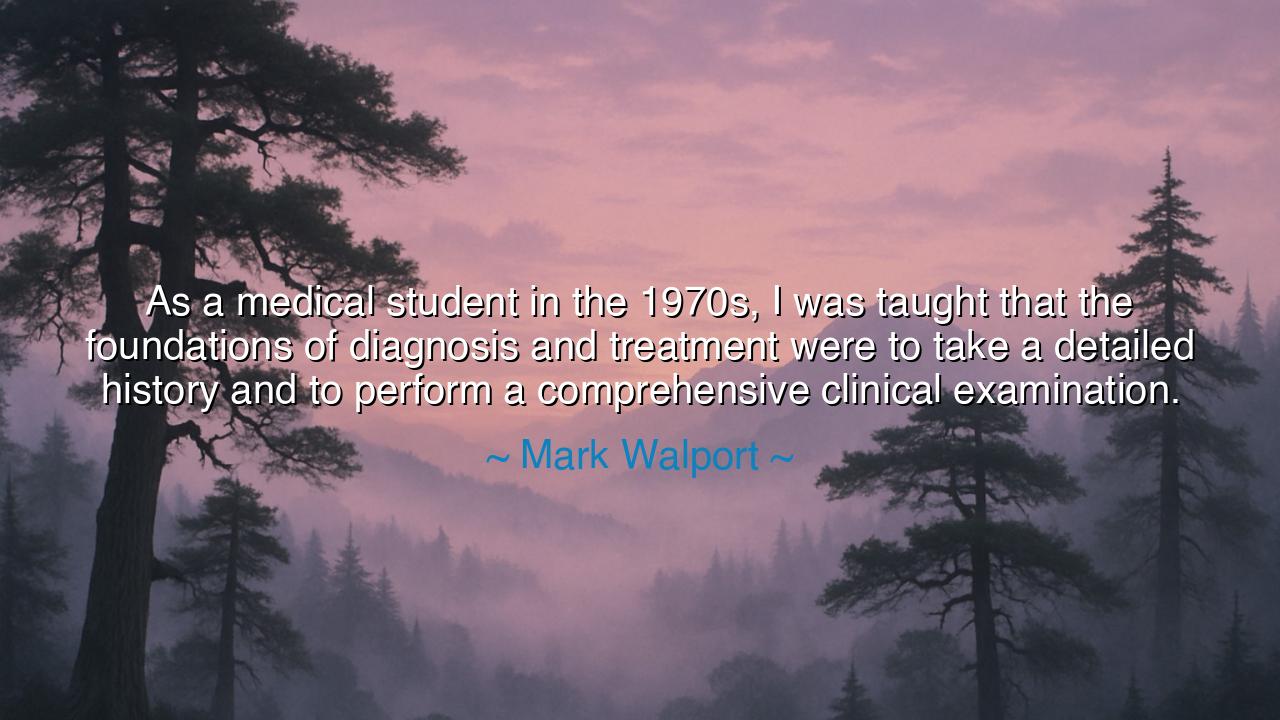
As a medical student in the 1970s, I was taught that the
As a medical student in the 1970s, I was taught that the foundations of diagnosis and treatment were to take a detailed history and to perform a comprehensive clinical examination.






Hear, O seekers of truth, the words of Mark Walport, spoken with the clarity of one who has walked the long path of medicine: “As a medical student in the 1970s, I was taught that the foundations of diagnosis and treatment were to take a detailed history and to perform a comprehensive clinical examination.” In this teaching lies not only the memory of a time past, but the eternal principle of healing: that the healer must first listen, and then look, before they ever act. The foundation of medicine, Walport declares, is not the machine, nor the test, nor the pill, but the sacred encounter between the physician and the patient.
The ancients understood this truth well. Hippocrates, the father of medicine, walked among the sick not with tools of iron, but with eyes to observe and ears to hear. He spoke of the importance of the history—the story of the patient’s suffering, woven with the thread of time. He taught that a careful examination of the body reveals truths no oracle can divine. Walport’s recollection of the 1970s is but the echo of this timeless wisdom: before the age of glowing screens and endless scans, the healer’s greatest instruments were patience, perception, and presence.
Yet even in our age, when the hum of machines fills the hospital halls, the lesson endures. To skip the story is to miss the soul; to bypass the examination is to overlook the body’s silent cries. Many have seen this truth in practice. Consider the tale of Dr. Joseph Bell of Edinburgh, whose powers of observation inspired the legendary detective Sherlock Holmes. Bell could discern a sailor by the calluses of his hands, or a soldier by his bearing, before a word was spoken. His method was simple: to look, to listen, and to attend with unwavering attention. Thus he healed not only with medicine, but with profound understanding.
Walport’s words remind us that in the rush toward modernity, we must not discard the ancient foundation. For tests and machines, though powerful, can never replace the human bond. A scan may reveal the shadow in the lung, but only the patient’s history will reveal the cause—whether dust, smoke, or sorrow. A laboratory may measure the blood, but only the physician’s eye upon the patient’s body can sense the subtle tremor or the pallor of the skin. To rely only on machines is to build a house without stone; it may stand for a while, but it lacks the strength of the earth.
The meaning is clear: the art of healing begins with humility. The physician must bow before the patient’s story, honoring the words spoken and unspoken. They must examine with care, touching not as a mechanic touches a tool, but as one entrusted with the fragile vessel of life. Only then may science and technology join the process, as servants to wisdom, not masters of it.
The lesson for us, whether healers or not, is profound: in all human dealings, begin with listening and observing. Do not rush to fix before you understand. In friendship, in leadership, in family—take the history of another’s heart before offering counsel. Examine with care the signs they give, in tone, in gesture, in silence. For in this way, you will not only respond more wisely, but also honor the sacred dignity of the other.
So let Walport’s teaching be passed down like a torch through the ages: that the foundation of all healing, of all relationship, is not the coldness of machinery but the warmth of attention. Let us practice the discipline of listening, the patience of examining, and the humility of placing understanding before action. For in this lies the truest form of wisdom, one that has endured from Hippocrates to the present day, and one that will endure as long as humanity seeks healing.






AAdministratorAdministrator
Welcome, honored guests. Please leave a comment, we will respond soon